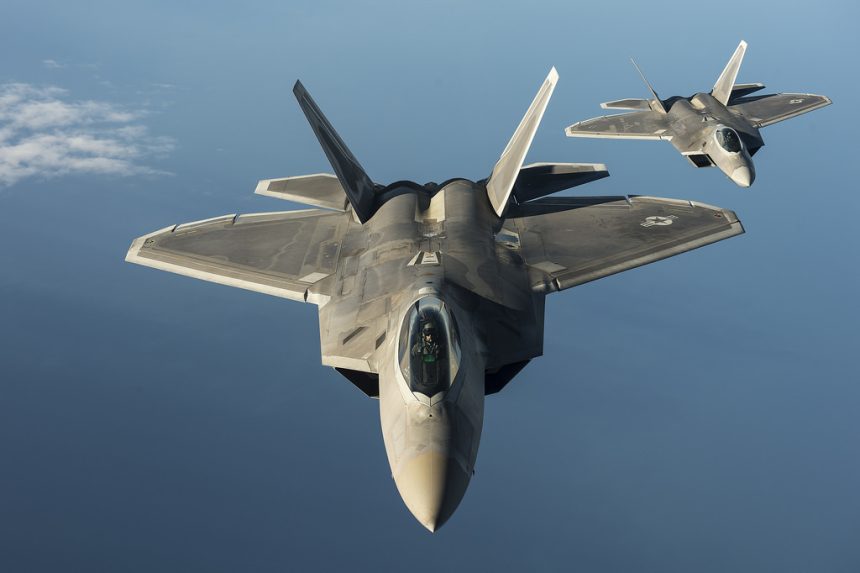The Raptors of the latest Block can drop GBU-39 small diameter bombs on ISIS targets.
The Raptors deployed to Al Dhafra airbase, UAE, are the most up-to-date F-22As flown by the U.S. Air Force.
Assigned to the 90th Fighter Squadron from Joint Base Elmendorf-Richardson, Alaska, the modernized Raptors made their debut in Operation Inherent Resolve, the air war on the Islamic State, in April, bringing expanded capabilities in the fight against Daesh.
“What our squadron is bringing to the fight now versus some of the previous squadrons, is we have the most up to date software and hardware loads that an F-22 can carry,” said Lt. Col. David, 90th Expeditionary Fighter Squadron commander in a recent Air Force release. “There is a huge advancement in the capabilities of the avionics, the radar system, the sensors and certain electronic features on board the aircraft.”
Although they are rarely requested to attack ground targets, the Alaskan Raptors can now drop 8 GBU-39 small diameter bombs while previously they were limited to carry two 1,000-lb GBU-32 JDAMs (Joint Direct Attack Munitions) in the internal weapon bay: with the latest upgrade they can be tasked for missions which require greater precision.
An initial air-to-surface capability, including that of dropping the GBU-39 (a 250-lb multipurpose, insensitive, penetrating, blast-fragmentation warhead for stationary targets equipped with deployable wings for extended standoff range, whose integration testing started in 2007) had been introduced with the software increment 3.1 back in 2012.
Even though the odds of using an advanced air-to-air missiles over Syria are pretty low, another important addition to the F-22’s payload is the latest generation AIM-9X (already integrated in most of US combat planes since 2003): on Mar. 1, 2016 the 90th Fighter Squadron (FS) officially became the first combat-operational Raptor unit to equip an F-22 with the AIM-9X Sidewinder.
Noteworthy, the AIM-9X will not be coupled to a Helmet Mounted Display (HMD) as the F-22 is not equipped with such kind of helmet that provides the essential flight and weapon aiming information through line of sight imagery (the project to implement it was axed following 2013 budget cuts) but the Raptor will probably benefit of the AIM-9X Block II, that is expected to feature a Lock-on After Launch capability with a datalink, for Helmetless High Off-Boresight (HHOBS): the air-to-air missile will be launched first and then directed to its target afterwards even though it is behind the launching aircraft.
Interestingly, along with the ability to carry “new” weapons, the aircraft were also given a radar upgrade that enhanced the F-22 capabilities in the realm of air interdiction and the so-called “kinetic situational awareness”: as we have often explained in previous articles, the role that the Raptor plays in the campaign is to use advanced onboard sensors, such as the AESA (Active Electronically Scanned Array) radar, to gather valuable details about the enemy targets, then share the “picture” with attack planes as the F-15E Strike Eagles.
















